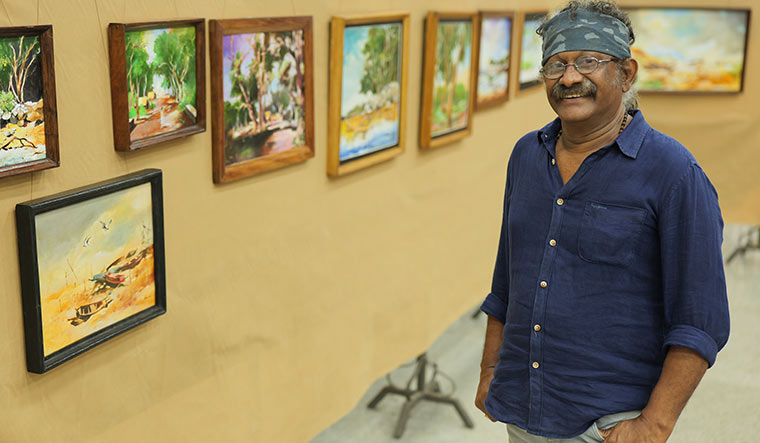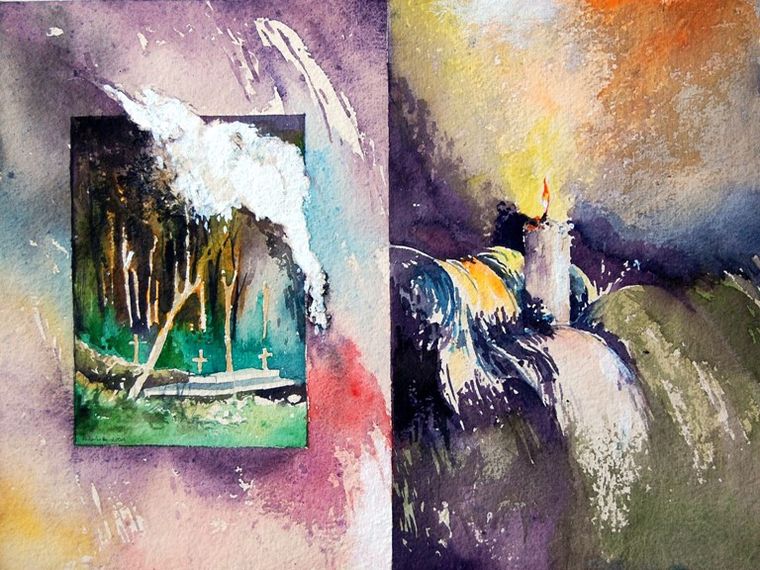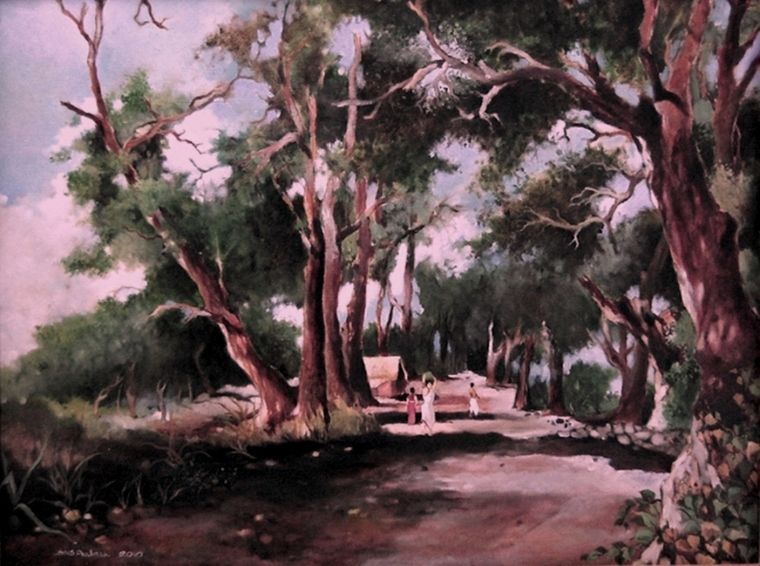A s a wandering seagull, I embarked on my journey to the Andamans.” Artist S.N. Sreeprakash has this simple explanation on how the captivating islands became his muse. Though originally from Kerala, he has made the Andaman and Nicobar Islands his home for the past three decades. His recent exhibition, titled ‘Me and My Palette’, in Thiruvananthapuram was a collection of his works, many of them capturing the life and history of the islanders.
Sreeprakash set foot on the islands in 1986. “I went there to visit my sister and her husband, who were employed on one of the islands,” he said. “I unexpectedly landed a job as a teacher at Little Andaman, a remote island.” Coming from a family of painters—both his father and grandfather mastered the art—his artistic journey took a serious turn at Little Andaman. “I began with watercolour and stump work, and later explored other mediums,” he said.
After a while he was transferred to Car Nicobar, the northernmost of the Nicobar Islands, where he switched his career from teaching to statistics. He soon got a job with the Amalgamated Statistical Cadre of the Andaman & Nicobar Administration.
Sreeprakash forged a strong bond with the islanders. He freely mingled with them and sketched their lives. The solo exhibition featured a remarkable collection of sketches and paintings that portrayed the island’s tribal life. Another series showcased the marvellous limestone caves, a challenging project, thanks to low light in the caves.
Car Nicobar holds a special place in Sreeprakash’s heart, as it was here that he spent his honeymoon with his wife, Jayshree. Witnessing the destruction caused by the Tsunami was a devastating experience for him. “Three days after the disaster, I had to visit Car Nicobar on official duty. The devastation was beyond words. Many could not even receive a proper ritualistic burial. I was deeply affected by the tragedy. In an attempt to pay homage to the departed souls, I started working on a series titled ‘Candles on Waves’.”
In 2017, ‘Candles on Waves’ was transformed into a book, capturing the customs, beliefs and lives of the Nicobarese before and after Tsunami. There are plans to make a movie based on the book as well.
Some of the paintings Sreeprakash created for the 2012 short film Mounathinte Nilavili (Scream of Silence), on the haunting history of the Cellular Jail in Port Blair and the torture endured by freedom fighters imprisoned there, were also part of the exhibition.
The Tricolour was first hoisted on the Andaman Islands on December 30, 1943, long before India became independent. This historic moment took place after Subhas Chandra Bose’s Indian National Army captured the islands with Japanese support. Sreeprakash said his exhibition was a “tribute to the freedom fighters and a salute to the Tricolour hoisted on December 30, 1943”.
On the 75th anniversary of the event, Sreeprakash created four artworks depicting the Car Nicobar and the Andaman islands. He created a colour portrait of Bose for the entrance of the Netaji Stadium in Port Blair.
The exhibition also featured a set of paintings that explored into the challenges women face in adjusting to a new household after marriage, and a tribute to all frontline workers, especially nurses, during the Covid pandemic.




